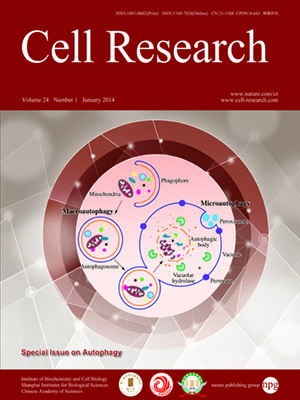
Volume 24, No 1, Jan 2014
ISSN: 1001-0602
EISSN: 1748-7838 2018
impact factor 17.848*
(Clarivate Analytics, 2019)
Volume 24 Issue 1, January 2014: 58-68
REVIEWS
A current perspective of autophagosome biogenesis
Shusaku T Shibutani1,2 and Tamotsu Yoshimori1,2
1Laboratory of Intracellular Membrane Dynamics, Graduate School of Frontier Biosciences, Osaka University, Osaka 565-0871, Japan
2Department of Genetics, Graduate School of Medicine, Osaka University, Osaka 565-0871, Japan
Correspondence: Tamotsu Yoshimori, Tel: +81-6-6879-3580; Fax: +81-6-6879-3589(tamyoshi@fbs.osaka-u.ac.jp)
Autophagy is a bulk degradation system induced by cellular stresses such as nutrient starvation. Its function relies on the formation of double-membrane vesicles called autophagosomes. Unlike other organelles that appear to stably exist in the cell, autophagosomes are formed on demand, and once their formation is initiated, it proceeds surprisingly rapidly. How and where this dynamic autophagosome formation takes place has been a long-standing question, but the discovery of Atg proteins in the 1990's significantly accelerated our understanding of autophagosome biogenesis. In this review, we will briefly introduce each Atg functional unit in relation to autophagosome biogenesis, and then discuss the origin of the autophagosomal membrane with an introduction to selected recent studies addressing this problem.
10.1038/cr.2013.159
FULL TEXT | PDF
Browse 2282


